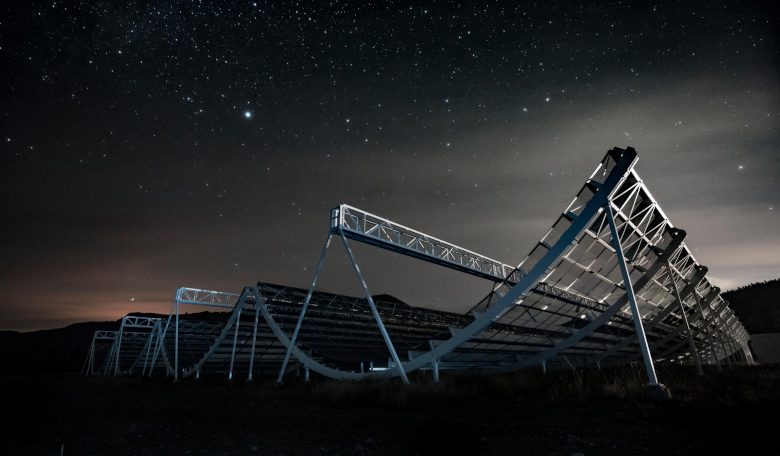Since 2007 mysterious bursts of radio waves that last milliseconds have been detected streaking through our skies, having started their journey somewhere beyond our galaxy and strangely, some seemed to be repeating, while others didn’t.
For a long time their origin remained uncertain, but now three separate studies on a fast radio burst named FRB 200428, has pinpointed the emitter as a magnetar in our galaxy suggesting that powerful objects of this type are the main source of other discovered bursts.
Fast radio bursts (FRBs) first came to the attention of astronomers thirteen years ago when Duncan Lorimer and his colleagues found a dispersed radio pulse signal in data collected by the Parkes 64-metre telescope in Australia in 2001.
The signal became known as a ‘Lorimer burst’ and for many years some astronomers were not convinced that these bright pulses of radiowaves were a genuine type of astrophysical transient event. Then, in 2013, four more events were reported.
The short-lived nature of FRB’s means that determining their position on the sky is challenging. Without knowing for certain what type of object could be behind the pulses, made it difficult to understand the underlying physics of how they are generated.
But that didn’t stop astronomers from trying to work it out and at one point there were more theories about where FRB’s came from than actual FRB events.
Most theories proposed that some kind of stellar remnant such as a neutron star, dense remnants of giant stars that have gone supernova, were the source of FRBs.
Then, highly magnetised young neutron stars known as magnetars became the main contender.
As their description suggests, magnetars are powered by intense magnetic fields that are one thousand trillion times stronger than Earth's magnetic field and are so intense that it heats the surface to nearly 10 million degrees celsius.
It is thought that movements in the magnetar’s crust, which is under an immense amount of strain, causes the dense star to release a vast amount of energy in the form of electromagnetic radiation from radio bursts to X-rays and gamma-rays.
Around thirty of these incredible objects are currently known to exist in our Galaxy and the nearby Magellanic Clouds and one of them, a galactic magnetar called SGR 1935+2154, has recently been the focus of three different studies after it fired off a FRB earlier this year.
SGR 1935+2154 quickly became a target of interest when both the Swift Observatory and the Fermi Gamma ray Space Telescope, detected multiple bursts of X-ray and gamma rays shooting out from the magnetar.
The next day, two radio telescopes, the Canadian Hydrogen Intensity Mapping Experiment (CHIME) and the Survey for Transient Astronomical Radio Emission 2 (STARE2), in the US detected an FRB from that sky region and the event became known as FRB 200428.
First to tie the two events together was the CHIME team, headed by Paul Scholz.
After reporting that the burst, now dubbed FRB 200428 originated from the same location as SGR 1935+2154, the STARE2 team, headed by Christopher Bochenek re-checked their own data to confirm the discovery of FRB 200428.
The announcement was significant because until now, there has been no observational evidence directly linking FRBs with magnetars.
As luck would have it, China’s five-hundred meter Aperture Spherical Telescope (FAST) was also pointed in the same patch of sky.
Unfortunately though, a team using the extremely sensitive telescope had already observed SGR 1935+2154 a couple of weeks earlier and so missed out on FRB 200428.
However, the team, led by Bing Zhang, did detect the same gamma-rays and x-rays that the two space observatories spotted making FRB 200428 the first fast radio burst for which emissions other than radio waves have been detected.
This lack of simultaneous emissions in other wavelengths suggests FRBs associated with short gamma-ray bursts are rare, say Zhang and colleagues.
Zhang and team did not miss out entirely on FRBs as two days later they detected another FRB at the same location.
Their data when added with that of the other studies show not only is FRB 200428 the brightest radio burst from a Galactic magnetar that has been measured so far, it is also as bright as other FRBs observed further away in nearby galaxies.
This discovery say the authors involved, highlights the need for international scientific cooperation in astronomy, and for sky coverage from multiple locations.
Not only that, the findings suggest that magnetars can produce at least some, and maybe all, fast radio bursts, concludes Bing Zhang.
Zhang’s review and all of the other studies have been released today in Nature.











